LOOKING FORWARD TO 2025
During our recent Annual Friends Membership Meeting, the focus was on the future, one filled with opportunities to improve and expand the
park experience and the Friends’ role in making that happen.
In 2024, there was a great deal of construction along the canal and towpath and many sections of the canal remain without water. However, 2025 will be a turning point for our beloved park. At our meeting, we heard updates from the park staff about what lies ahead next year and it was good news.
Delaware Canal State Park Management Update
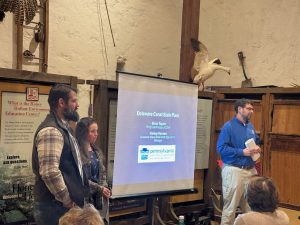
Kelsey Hansen, the assistant park manager, Brian Heath, the Delaware Division manager, and Brian Taylor, DCNR’s regional manager, were on hand to review past and planned projects and answer questions.
Ms. Hansen provided the overview, stating, “Nine major projects were completed within the last year. Projects that are considered major cost
$100,000 or more to do the work. Bowman’s Hill Wastegate, a significant structure to hold in water, was replaced, and several bridges from our twelve bridges project work were completed, including Tebola-Beans Bridge and the David Library Bridge.”
To ensure that the public is kept informed of these projects and their status, the park introduced some new resources on its website, including maps showing the location of construction, a Gantt chart showing the timelines of major projects and an FAQ page.
Two of the projects that received the most attention during the meeting were the replacement of the High Falls Creek Sub-canal culvert and Lumberville Aqueduct. Several delays due to re-designs and easements have been ironed out, and contracts have been awarded. Weather
permitting, these projects will move forward with construction in early 2025. You can find additional details in the Park Manager’s Report included in this newsletter.
The Friends’ Vision for 2025 and beyond
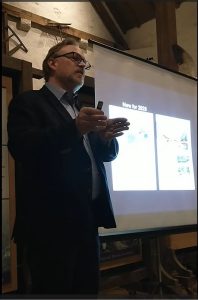
Brett Webber, board president, reviewed highlights from the Friends’ 2032 Plan. Working with DCNR and Studio Bryan Hanes, a regional landscape architecture and design firm, the Friends identified key initiatives to enhance the infrastructure in the park and improve access while
preserving this National Historic Landmark. Webber remarked, “ We are in our final review and will have an event to take you through the opportunities we feel are actionable and needed
such as improved access for pedestrians, boaters and linking to other parks.”
Webber also outlined our involvement with the broader “canal community.” The Friends are pursuing an application to present a history of the Delaware Canal at the next World Canals Conference in Buffalo next year. “These conferences are a great opportunity. Several years ago, we participated in a conference hosted by the Chesapeake and Ohio Canal National Historical Park. The conference is an enormous collection of people from all over the world talking about their advocacy, plans, and how they manage and operate canals. Many of them are within park systems, and there are others around the world that are not. But there’s lots to learn.” Webber continued, “We have lots to share, but it’s also a
dry run because we are eagerly pursuing hosting the 2032 World Canals Conference here on the Delaware Canal, in partnership with our friends
across the river and north.”
Senator Steve Santarsiero shows his support of the Delaware Canal
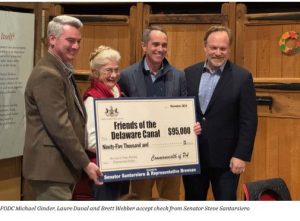 The meeting’s highlight was a presentation by Senator Steve Santarsiero. A long-time Bucks County resident, legislator and outdoor enthusiast, Santarsiero understands the importance of the Delaware Canal to his district.
The meeting’s highlight was a presentation by Senator Steve Santarsiero. A long-time Bucks County resident, legislator and outdoor enthusiast, Santarsiero understands the importance of the Delaware Canal to his district.
“I want to make sure that part of my legacy is to ensure this canal will be taken care of for years to come. This park is a special place, and that’s why we are all here tonight. We are so lucky to have this unique park right here in Bucks County.” Santarsiero said. To illustrate his commitment to the park, “A year and a half ago, I started the first Delaware Canal Caucus in the state legislature; it is bicameral and bipartisan so every legislator who represents any stretch of the canal is a part of it. I represent the longest stretch in my district.” This group has worked with DCNR to ensure that needed repairs are completed so that water can be reintroduced back into the canal. “All I want to do tonight is to let you know that I am 100% behind the Friends’ efforts. Back in September, when we did our tour with DCNR, it was helpful to see the work that was happening and, I think, also to reinforce with the caucus members how important it is to continue to fight for the canal. It is frustrating for me that the state doesn’t do more to fund our park system. The guys at DCNR do a tremendous amount of work on a shoestring budget. We will
continue to fight to get more funding.”
Senator Santarsiero then presented a $95,000 check to FODC board members and Executive Director Michael Ginder to move forward with
a new pump in the Bowman’s Hill area. The Friends will use this money to create an engineering design for the pump housing in accordance with requirements from the Pennsylvania Fish and Boat Commission and DCNR.
Great food, great Friends and a nice big check! It was a perfect evening.
Park Project Recap
The park staff has been hard at work getting projects underway so that we can have a fully watered canal. As many already know, engineering a solution, bidding and awarding a project, and getting the work underway can take a very long time.
We all love our canal with water. Unfortunately, the canal has been plagued with issues that originated when it was first constructed. Think
about it: A nearly 60-mile-long trench was dug by hand by farmers and laborers in record time. The state was in a hurry to open the canal, and
subsequently, the construction quality suffered.
However, the flaws and setbacks haven’t curbed DCNR’s determination to repair and rewater, hopefully by the semiquicenntential. In fact, many major projects have been completed.
Projects Completed in 2024
• Easton Towpath–Flood damage repairs
• Canal Lane Bridge
• New Hope Inlet Bridge
• New Hope Canal Bank Wall Repair
• Bowman’s Hill Waste Gate
• Buckstone Farm Bridge
• Tebola-Beans/Amber Beech Bridge
• Bridge Street Crossing / Morrisville Ramp
Current Projects
• Raubsville Sub-Canal Culvert
• High Falls Sub-Canal Culvert
• Smithtown Bridges 3 & 4
• Lumberville Aqueduct
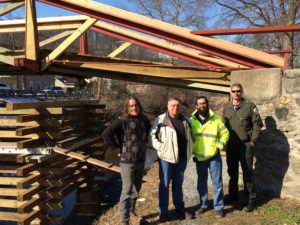
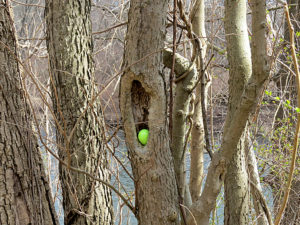
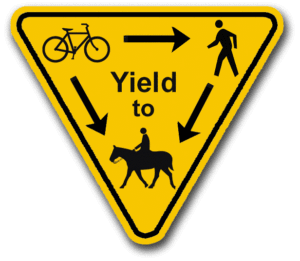
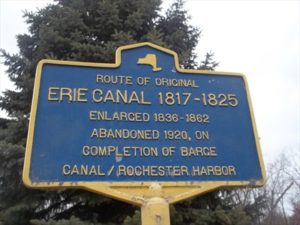
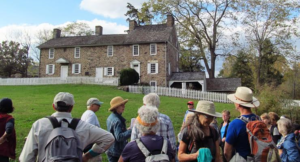
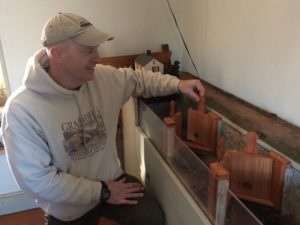
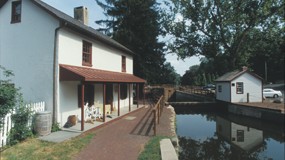
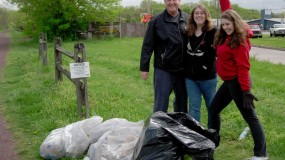
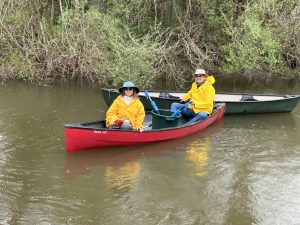 April 12, 2025
April 12, 2025 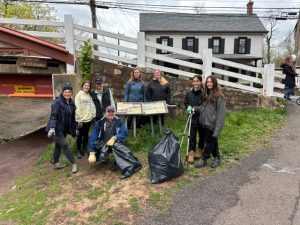 9 AM to 12 PM
9 AM to 12 PM